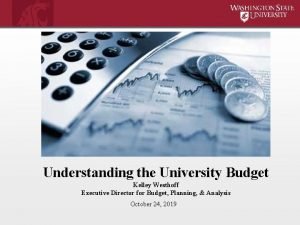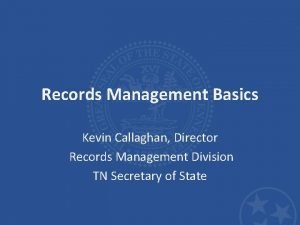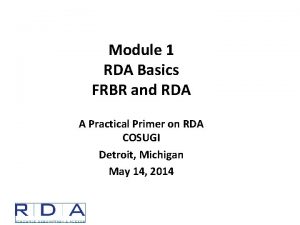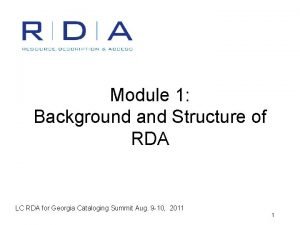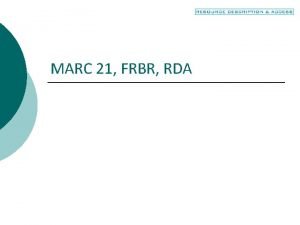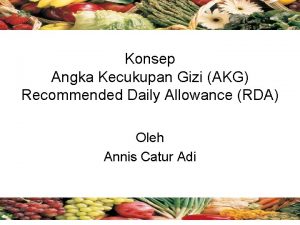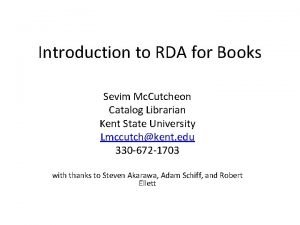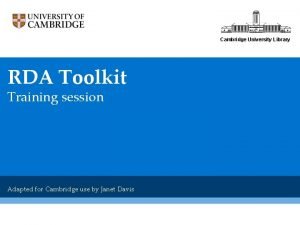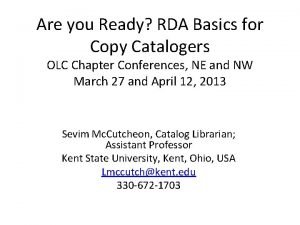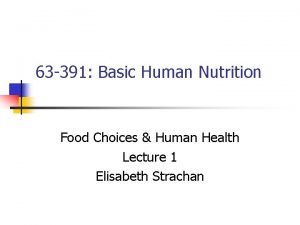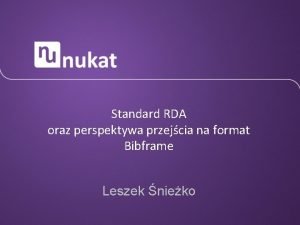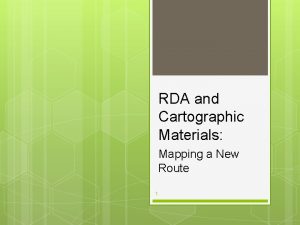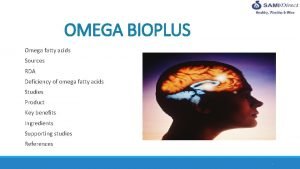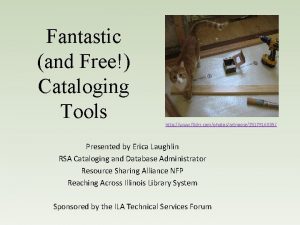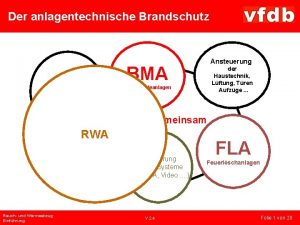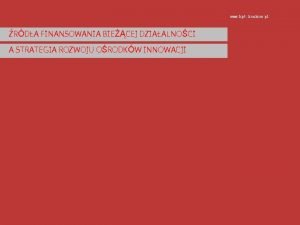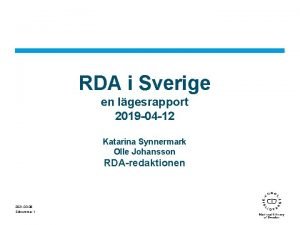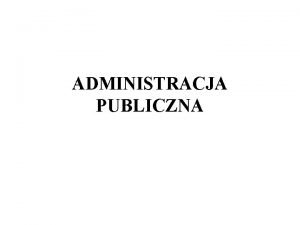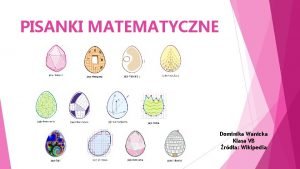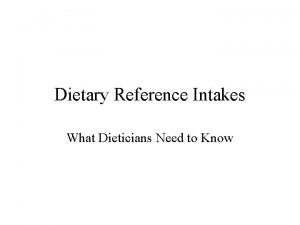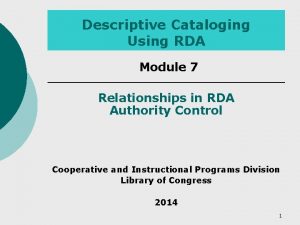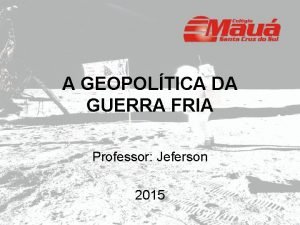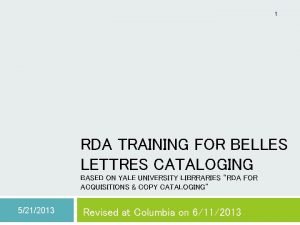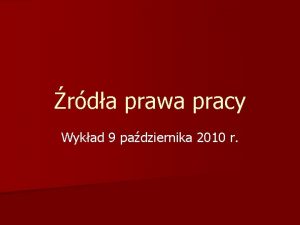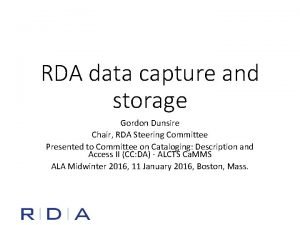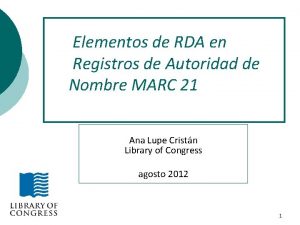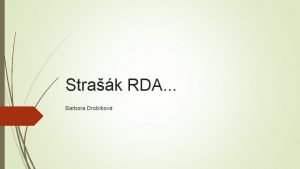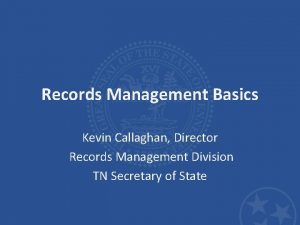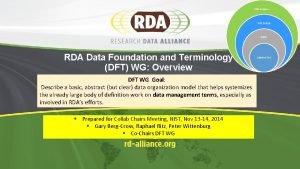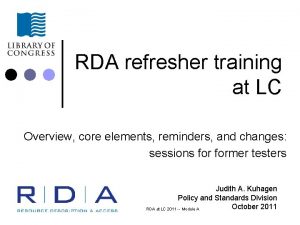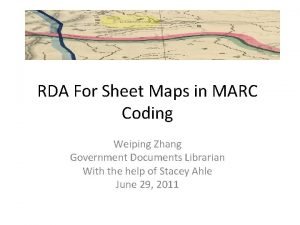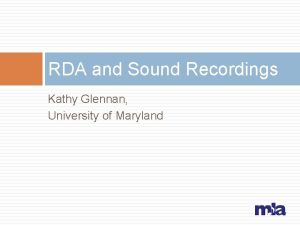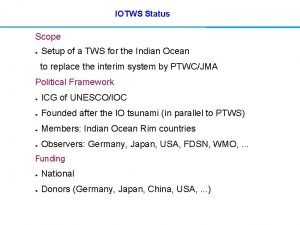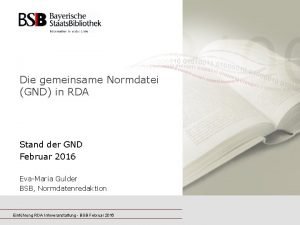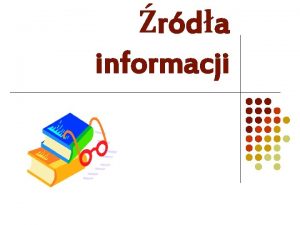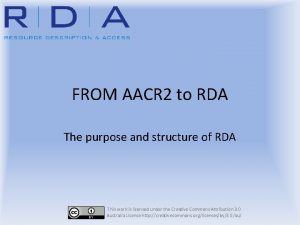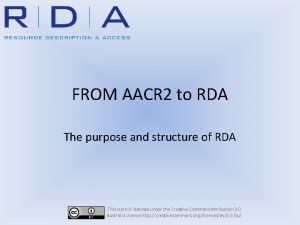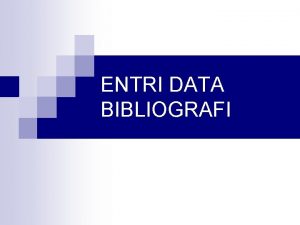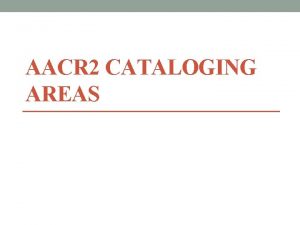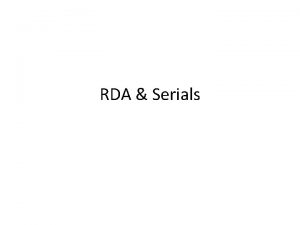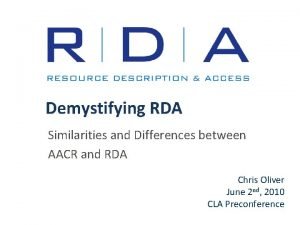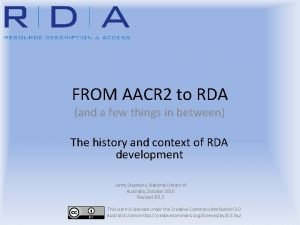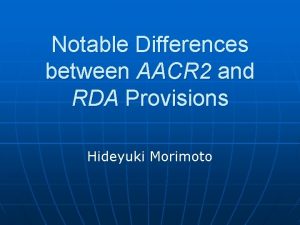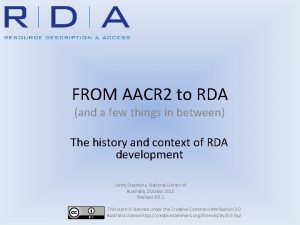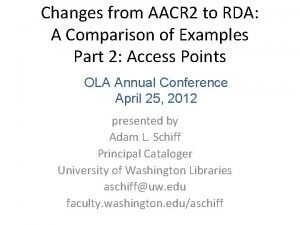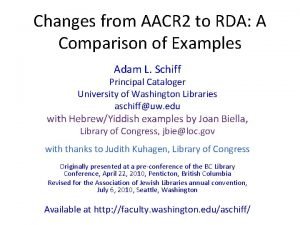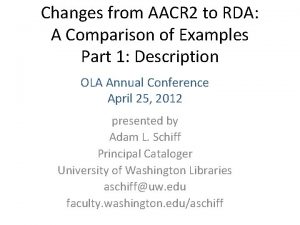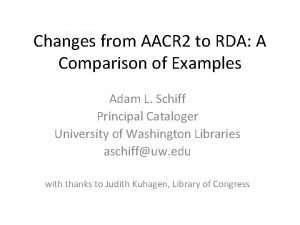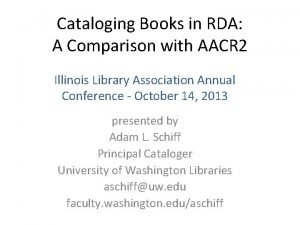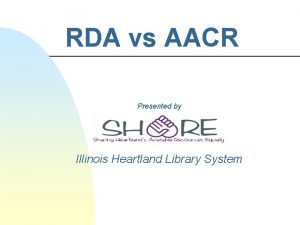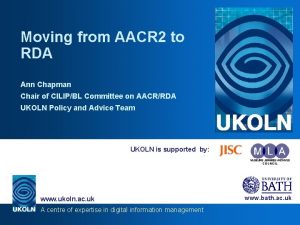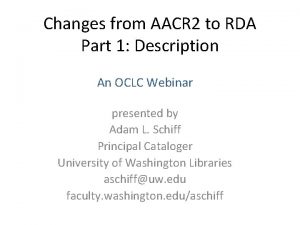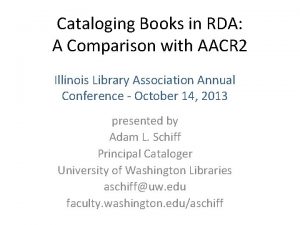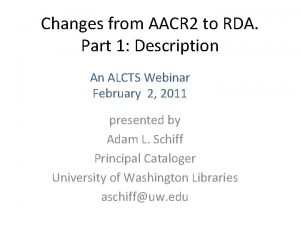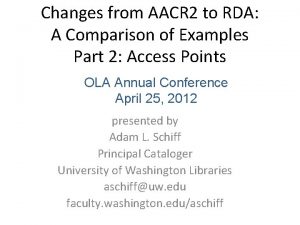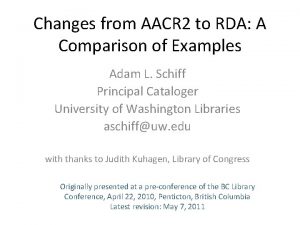FROM AACR 2 to RDA The purpose and






































































- Slides: 70

FROM AACR 2 to RDA The purpose and structure of RDA This work is licensed under the Creative Commons Attribution 3. 0 Australia License http: //creativecommons. org/licenses/by/3. 0/au/

Overview Background Purpose FRBR Refresher RDA Structure Key differences from AACR 2

Background

Background History in brief • Late 1990 s – future of AACR 2? • 2004 – AACR 3 draft • 2005 – Decision to develop RDA • 2010 – RDA published.

Background Paris Principles (1961) ICP - International Cataloguing Principles (2009) ISBDs (from 1971 onwards) – Format specific Single format neutral ISBD (2009)

Background FRBR family • Functional Requirements for Bibliographic Records – 1998 • Functional Requirements for Authority Data – 2009 • FRSAD – Functional Requirements for Subject Authority Data – 2010

World wide web of information Semantic web RDF Metadata standards Linked Data

Purpose

Purpose Focus on user • Each section explicitly related to user tasks • Fewer abbreviations and omissions • No limitations on number of access points

Purpose New way of thinking about data • Application of FRBR/FRAD • Format neutral • More cataloguer’s judgement

Purpose Content standard • “What” to record, not “how” • Independent of encoding schema • Adaptable and sharable in a digital world

FRBR Refresher

FRBR Refresher ENTITIES • Key “things” of interest to users 3 groups: Group 1 (Resources) - Work, Expression, Manifestation, Item Group 2 (Agents) - People, families, corporate bodies Group 3 (Subjects) - Concepts, objects, events, places

FRBR Refresher RELATIONSHIPS • The relationships that the entities have with other entities Resources Agents, subjects Agents Subjects Other resources Other agents/subjects

FRBR Refresher USER TASKS • What users need to do Resources • Find • Identify • Select • Obtain Other entities • Find • Identify • Contextualise (RDA: Clarify) • Justify (RDA: Understand)

RDA Structure

RDA Structure • Description – ISBD elements – classes of material – mode of issuance – type of description • Access – choice of access points – form of headings – references Source: Adapted from AACR 2 versus RDA by Tom Delsey. May 29, 2009

RDA Structure AACR 2 - Part I 1. General Rules for Description 2. Books, Pamphlets, and Printed Sheets 3. Cartographic Materials 4. Manuscripts 5. Music 6. Sound Recordings 7. Motion Pictures and Videorecordings 8. Graphic Materials 9. Electronic Resources 10. Three-Dimensional Artefacts and Realia 11. Microforms 12. Continuing Resources 13. Analysis Source: Adapted from AACR 2 versus RDA by Tom Delsey. May 29, 2009

RDA Structure AACR 2 - Part I 1. General Rules for Description 2. Books, Pamphlets, and Printed Sheets 3. Cartographic Materials 4. Manuscripts 5. Music 6. Sound Recordings Online 7. Motion Pictures and Videorecordings 8. Graphic Materials 9. Electronic Resources 10. Three-Dimensional Artefacts and Realia 11. Microforms 12. Continuing Resources 13. Analysis

RDA Structure AACR 2 - Part I 1. General Rules for Description 2. Books, Pamphlets, and Printed Sheets 3. Cartographic Materials 4. Manuscripts 5. Music 6. Sound Recordings 7. Motion Pictures and Videorecordings 8. Graphic Materials 9. Electronic Resources 10. Three-Dimensional Artefacts and Realia 11. Microforms 12. Continuing Resources 13. Analysis

RDA Structure Catalogue record Set of data elements Format-based Format neutral

RDA Structure AACR 2 RDA • Access –choice of access points –form of headings –References • Access –FRBR relationships –attributes of FRAD entities –FRAD relationships –subject relationships* • Description –ISBD elements –classes of material –mode of issuance –type of description • Description –attributes of FRBR entities –types of content and carrier –mode of issuance –type of description Source: Adapted from AACR 2 versus RDA by Tom Delsey. May 29, 2009

RDA Structure Source: Adapted from AACR 2 versus RDA by Tom Delsey. May 29, 2009

Attributes – Chapters 1 -17 • • Manifestations and items Works and expressions Persons, families and corporate bodies Places, objects, concepts, events. Future

Attributes – Chapters 1 -17 Screen image from the RDA Toolkit (www. rdatoolkit. org) used by permission of the Co. Publishers for RDA (American Library Association, Canadian Library Association, and CILIP: Chartered Institute of Library and Information Professionals)

Attributes – Chapters 1 -17 Screen image from the RDA Toolkit (www. rdatoolkit. org) used by permission of the Co-Publishers for RDA (American Library Association, Canadian Library Association, and CILIP: Chartered Institute of Library and Information Professionals)

Attributes – Chapters 1 -17 Screen image from the RDA Toolkit (www. rdatoolkit. org) used by permission of the Co-Publishers for RDA (American Library Association, Canadian Library Association, and CILIP: Chartered Institute of Library and Information Professionals)

Screen image from the RDA Toolkit (www. rdatoolkit. org) used by permission of the Co. Publishers for RDA (American Library Association, Canadian Library Association, and CILIP: Chartered Institute of Library and Information Professionals)

NEW! Screen image from the RDA Toolkit (www. rdatoolkit. org) used by permission of the Co. Publishers for RDA (American Library Association, Canadian Library Association, and CILIP: Chartered Institute of Library and Information Professionals)

Screen image from the RDA Toolkit (www. rdatoolkit. org) used by permission of the Co-Publishers for RDA (American Library Association, Canadian Library Association, and CILIP: Chartered Institute of Library and Information Professionals)

Relationships – Chapters 18 -32 • Between work, expression, manifestation and item – Primary relationships (Uniform title) – Other relationships (related works) • • To Persons, families and corporate bodies To Places, objects, concepts, events. Future Between persons, families, corporate bodies, Between subjects. Future

Appendices • Capitalisation, abbreviation, initial articles, titles of nobility, dates, etc. NEW • Mappings between MARC, ISBD, RDA • Relationship designators

Appendices – Relationship designators NEW Controlled terms to indicate the type of relationship: • Between a resource and Group 2 entities e. g. author, illustrator • Between resources (Group 1 entities) e. g. translation of, adaptation of, sequel to • Between Group 2 entities e. g. Alternate identity (pseudonyms), predecessor • Subject relationships [Source: Adapted from RDA Draft / a presentation by Chris Todd, Janess Stewart and Charlotte Stretton, March 2, 2009]

Appendices – Relationship designators NEW 100 1 $a. Keneally, Thomas, $d 1935 - $e author 245 1 0 $a. Schindler's ark /$c. Thomas Keneally. 700 1 # $a Mc. Grath, Douglas, $e film director, $e screenwriter.

Key differences from AACR 2

Key differences from AACR 2 What’s the same? • AACR 2 instructions – Including Options and Alternatives • Most of us will still use MARC 21 • Will still fit into ISBD record structure

Key differences from AACR 2 [Photos from http: //www. allsaintsainslie. org. au/ and Google images]

Key differences from AACR 2 What’s different? • Print based vs. Online interactive tool. • Levels of description vs. Core elements • GMD vs. Content, Carrier and Media type • Main entry vs. authorised access points for works. • Examples showing changes in transcription and recording of data

Web-based interactive tool http: //access. rdatoolkit. org/ Screen image from the RDA Toolkit (www. rdatoolkit. org) used by permission of the Co-Publishers for RDA (American Library Association, Canadian Library Association, and CILIP: Chartered Institute of Library and Information Professionals)

Web-based interactive tool • Fully interactive – – – FULL Searching capabilities Linking between sections Mapping tools Links to policy statements (eg LC Policy Statements) Bookmarking and workflow creation features Potential to link with your cataloguing client. • Not intended to be read as a linear document – Dip into at the point of need – Customised views http: //www. rdatoolkit. org/training

Levels of description AACR 2 - levels of description RDA - core elements – Section 1 • title Eg First level • • • title proper first statement of responsibility edition statement material specific details first publisher, etc. date of publication, etc. extent of item notes standard number • • • Statement of responsibility Edition numbering of serials Production, publication, distribution and manufacture statements Copyright date (if no other date available) Series statement identifier for the manifestation carrier type extent Source: Adapted from AACR 2 vs. RDA by Tom Delsey given at From rules to entities: cataloguing with RDA (Preconference of the Canadian Library Association Conference, May 29, 2009)

Categorisation of resources General Material Designation electronic resource microform sound recording videorecording filmstrip motion picture slide transparency Media Type audio computer microform video Carrier type film reel filmstrip overhead transparency slide Content Type cartographic material music text cartographic. . . notated music text. . . and more! Source: Adapted from AACR 2 vs. RDA by Tom Delsey given at From rules to entities: cataloguing with RDA (Preconference of the Canadian Library Association Conference, May 29, 2009)

Categorisation of resources CARRIER TYPE Audio carriers audio cartridge audio cylinder audio disc audio roll audiocassette audiotape reel sound-track reel Computer carriers computer card computer chip cartridge computer disc cartridge computer tape cassette computer tape reel online resource Microform carriers aperture card microfiche cassette microfilm cartridge microfilm cassette microfilm reel microfilm roll microfilm slip microopaque Microscopic carriers microscope slide Video carriers video cartridge videocassette videodisc videotape reel Stereographic carriers stereograph card stereograph disc Projected image carriers film cartridge film cassette film reel film roll filmslip filmstrip cartridge overhead transparency slide Unmediated carriers card flipchart object roll sheet volume

Categorisation of resources Source: RDA: Resource description and access (© 2010– American Library Association, Canadian Library Association, and CILIP: Chartered Institute of Library and Information Professionals)

Categorisation of resources Source: RDA: Resource description and access (© 2010– American Library Association, Canadian Library Association, and CILIP: Chartered Institute of Library and Information Professionals)

Categorisation of resources Source: Changes from AACR 2 to RDA: A comparison of examples / Adam L. Schiff

Main entry and authorised access points Main entry (Card catalogue) Primary access point (Online catalogue) Authorised access point for the WORK (RDA and FRBR)

Main entry and authorised access points Identifying and constructing the authorised access point: • Chapter 6 - Identifying works and expressions, • Chapter 17 - Recording Primary relationships Access points for Creators • Chapter 19 - Persons, families and corporate bodies associated with a work.

Recording/Transcribing data Representation (International Cataloguing Principles) descriptions and controlled forms of names should be based on the way the entity describes itself. Therefore, discourages – Use of abbreviations – Omission of relevant information – Adding information – Changing information

Recording/Transcribing data Source: Changes from AACR 2 to RDA: A comparison of examples / Adam L. Schiff

Recording/Transcribing data Source: Changes from AACR 2 to RDA: A comparison of examples / Adam L. Schiff

Recording/Transcribing data Source: Changes from AACR 2 to RDA: A comparison of examples / Adam L. Schiff

Recording/Transcribing data Source: Changes from AACR 2 to RDA: A comparison of examples / Adam L. Schiff

Recording/Transcribing data Source: Changes from AACR 2 to RDA: A comparison of examples / Adam L. Schiff

Recording/Transcribing data Source: Changes from AACR 2 to RDA: A comparison of examples / Adam L. Schiff

Recording/Transcribing data Source: Changes from AACR 2 to RDA: A comparison of examples / Adam L. Schiff

Recording/Transcribing data Source: Changes from AACR 2 to RDA: A comparison of examples / Adam L. Schiff

Recording/Transcribing data Source: Changes from AACR 2 to RDA: A comparison of examples / Adam L. Schiff

Recording/Transcribing data Source: Changes from AACR 2 to RDA: A comparison of examples / Adam L. Schiff

Recording/Transcribing data Source: Changes from AACR 2 to RDA: A comparison of examples / Adam L. Schiff

Recording/Transcribing data Source: Changes from AACR 2 to RDA: A comparison of examples / Adam L. Schiff

Recording/Transcribing data Source: Changes from AACR 2 to RDA: A comparison of examples / Adam L. Schiff

Example records

Example records 020 $a 8190366157 040 ## $a NRC $c NRC $e rda 245 00 $a Food security in India : $b challenges of 21 th century / $c Dr. Anshu. 246 3# $i Title on cover: $a Food security in India : challenges of 21 st century 250 ## $a First edition. 260 ## $a [Place of publication not identified] : $b [publisher not identified], $c 2009 $e (Patna, Bihar : $f Kalakriti Offset) 300 ## $a vi, 246 pages : $b illustrations, map ; $c 23 cm 336 ## $a text $2 rdacontent 336 ## $a cartographic image $2 rdacontent 337 ## $a unmediated $2 rdamedia 338 ## $a volume $2 rdacarrier 504 ## $a Includes bibliographical references. 700 0# $a Anshu $c (Professor), $e editor of compilation. Source: Adapted from an example record found at: https: //staff. lib. ncsu. edu/confluence/display/MNC/RDA+Test

Example records 022 ## $a 0317 -6878 041 0# $a eng $a fre 210 0# $a CA mag. $b (Tor. ) 222 #0 $a CA magazine $b (Toronto) 245 00 $a CA magazine. 260 ## $a Toronto, Ontario ; $a Montreal, Quebec : $b Canadian Institute of Chartered Accountants, $c 1974300 ## $a volumes : $b illustrations (chiefly colour), portraits ; $c 29 cm. 310 ## $a 10 times a year (with combined issues in January/February and June/July), $b 1990 s? 321 ## $a Monthly, $b January 1974 -1990 s? 336 ## $a text $2 rdacontent 337 ## $a unmediated $2 rdamedia 338 ## $a volume $a rdacarrier 362 0# $a Volume 104, no. 1 (January 1974)530 ## $a Also available in microfilm and microfiche format. 546 ## $a In English; includes some text in French. Source: http: //www. rda-jsc. org/docs/6 JSC_RDA_Complete_Examples_%28 Bibliographic%29_revised. pdf

Example records 100 1_ |a Sesser, Janet R. 370 __ |c U. S. |f Phoenix, Ariz. 371 __ |m jsesser@anthem. edu 373 __ |a High-Tech Inst. 373 __ |a TCI Education, Inc. 374 __ |a corporate director 374 __ |a corporate dean 374 __ |a vice-president 375 __ |a female 377 __ |a eng 670 __ |a Houser, Helen J. LWW’s medical assisting exam review for CMA amd RMA certification, c 2005: |b CIP t. p. (Janet R. Sesser, BS, RMA, CMA; corp. dir. of Education, Allied Health, High-Tech Inst. , Phoenix, Ariz. ) (jsesser@anthem. edu). . . Source: https: //staff. lib. ncsu. edu/confluence/display/MNC/RDA+Test

Example records 110 1_ |a Wisconsin. |b Dept. of Transportation 410 1_ |a Wisconsin. |b Transportation, Dept. of 410 2_ |a Wis. DOT 670 __ |a Implementing transportation research, 2002: |b cover (Wisconsin Dept. of Transportation; Wis. DOT) 710 14 |a Wisconsin. |b Department of Transportation 952 __ |a RETRO 953 __ |a xx 00 |b ga 37 Source: https: //staff. lib. ncsu. edu/confluence/display/MNC/RDA+Test

Policy Library of Congress Policy Statements (LCPS) • Non-Core elements • Options and Alternatives • Other areas National Library • Agreement with LC and other national libraries • Any additional required policies Libraries Australia • Minimum required data elements

Acknowledgments • Parts of this presentation have been copied from presentations by Catherine Argus, Tom Delsey, Adam Schiff, Chris Todd, Janess Stewart and Charlotte Stretton. • Some other information has been copied from the North Carolina State University RDA Test website. • Chris Oliver’s book, Introducing RDA : a guide to the basics (London, Facet Publishing, 2010) has also been a valuable source of information. • Screen images from the RDA Toolkit (www. rdatoolkit. org) used by permission of the Co-Publishers for RDA (American Library Association, Canadian Library Association, and CILIP: Chartered Institute of Library and Information Professionals) 69

Sources ACOC Website http: //www. nla. gov. au/lis/stndrds/grps/acoc/rda. html
 Procainoterapia
Procainoterapia What is rda?
What is rda? Vitamin b deficiency tongue
Vitamin b deficiency tongue Rda wsu chart
Rda wsu chart Rda callaghan
Rda callaghan Frbr rda
Frbr rda Structure of rda
Structure of rda Rda fields
Rda fields Arti akg
Arti akg What is rda?
What is rda? Rda toolkit
Rda toolkit Que significa rda en nutricion
Que significa rda en nutricion What is rda?
What is rda? Nutrition food
Nutrition food Rda sverige
Rda sverige Rda standard
Rda standard Rda road map
Rda road map Omega bioplus
Omega bioplus Rda cataloging cheat sheet
Rda cataloging cheat sheet Rda haustechnik
Rda haustechnik Rda coaching pathway
Rda coaching pathway Kraków rda
Kraków rda Rda sverige
Rda sverige Rda darba laiks
Rda darba laiks Rda food label
Rda food label Administracja publiczna co to
Administracja publiczna co to Rda
Rda Dominika wanicka
Dominika wanicka Rda ai
Rda ai Rda relationship designators
Rda relationship designators Auditoria financiera gubernamental
Auditoria financiera gubernamental Rda rfa
Rda rfa Belletristic examples
Belletristic examples Rda 2010
Rda 2010 Rda lrm
Rda lrm Punto cardinal de la rda
Punto cardinal de la rda Rda toolkit
Rda toolkit Rda callaghan
Rda callaghan Core rda
Core rda Rda core elements
Rda core elements Rda map
Rda map Purk
Purk Tsunami rda greece
Tsunami rda greece Gnd in
Gnd in Hình ảnh bộ gõ cơ thể búng tay
Hình ảnh bộ gõ cơ thể búng tay Bổ thể
Bổ thể Tỉ lệ cơ thể trẻ em
Tỉ lệ cơ thể trẻ em Chó sói
Chó sói Glasgow thang điểm
Glasgow thang điểm Hát lên người ơi
Hát lên người ơi Môn thể thao bắt đầu bằng từ chạy
Môn thể thao bắt đầu bằng từ chạy Thế nào là hệ số cao nhất
Thế nào là hệ số cao nhất Các châu lục và đại dương trên thế giới
Các châu lục và đại dương trên thế giới Công của trọng lực
Công của trọng lực Trời xanh đây là của chúng ta thể thơ
Trời xanh đây là của chúng ta thể thơ Cách giải mật thư tọa độ
Cách giải mật thư tọa độ Phép trừ bù
Phép trừ bù độ dài liên kết
độ dài liên kết Các châu lục và đại dương trên thế giới
Các châu lục và đại dương trên thế giới Thể thơ truyền thống
Thể thơ truyền thống Quá trình desamine hóa có thể tạo ra
Quá trình desamine hóa có thể tạo ra Một số thể thơ truyền thống
Một số thể thơ truyền thống Cái miệng xinh xinh thế chỉ nói điều hay thôi
Cái miệng xinh xinh thế chỉ nói điều hay thôi Vẽ hình chiếu vuông góc của vật thể sau
Vẽ hình chiếu vuông góc của vật thể sau Biện pháp chống mỏi cơ
Biện pháp chống mỏi cơ đặc điểm cơ thể của người tối cổ
đặc điểm cơ thể của người tối cổ Ví dụ giọng cùng tên
Ví dụ giọng cùng tên Vẽ hình chiếu đứng bằng cạnh của vật thể
Vẽ hình chiếu đứng bằng cạnh của vật thể Vẽ hình chiếu vuông góc của vật thể sau
Vẽ hình chiếu vuông góc của vật thể sau Thẻ vin
Thẻ vin



